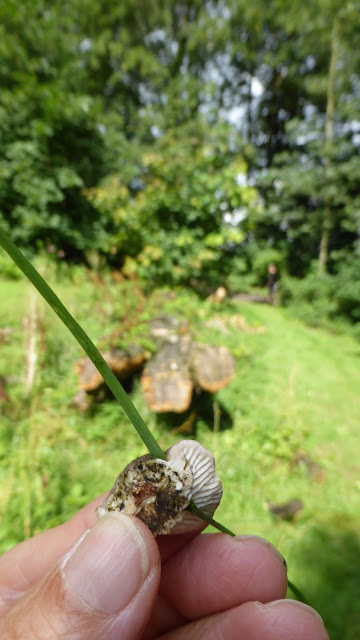I hope Sharron Flint will be able to identify them for me..
 |
| Hydropsychidae Caddis have long antennae.. I wonder if I really need to photograph all the antenna for the sake of identfication. |
I had said to Sharron
"We are Moth Trapping at Lower Winskill. We won't get many Caddis because there is no stream there" She just looked at me. !! (with an expression "You don't know how wrong you are)
OK. Above is Caddis no 1. Three more to come. and that does not count the 6+ that got away
OK. Above is Caddis no 1. Three more to come. and that does not count the 6+ that got away
 |
| Caddis number 2 |
This turned out to be the same as:
 |
| Caddis number 4 |
When I sent the picture to Sharon she said
"You have Potamophylax sp there Judith. We have 3 sp in UK. Large Cinnamon Sedge! P.cingulatus, P.latipennis and P.rotundipennis. Need separation based on genitalia. At least we can get a genus from the wing pattern. Family, Limnephilidae."
and "Did you keep any voucher specimens?"
It was so windy on the last evening we might not find anything.. We'll see.
On the Friday morning I caught just one.

I think this one is Limnephilus lunatus
with the half/crescent moon "cut" into its end wing














































